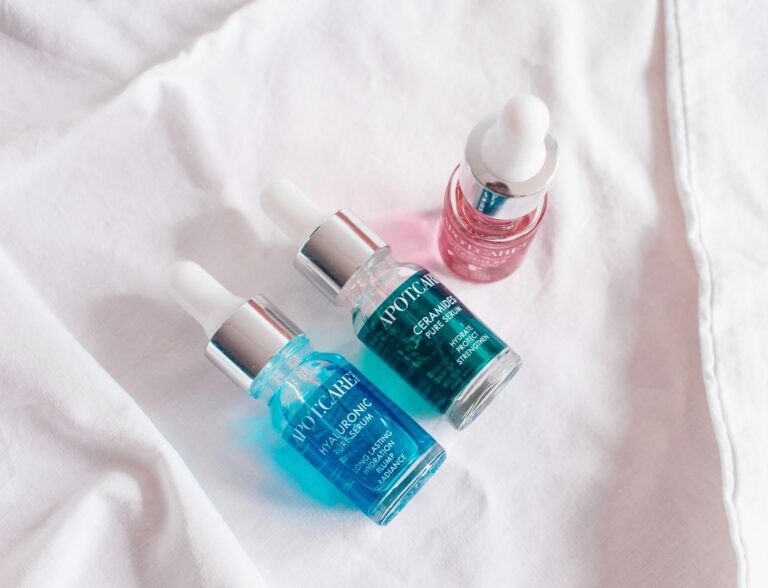
In the realm of cosmetic enhancements, fillers frequently evoke both curiosity and confusion. There are many misconceptions associated with their use, which can lead to unnecessary hesitation for individuals contemplating treatment.
Beliefs regarding their permanence and assumptions about who can benefit from them can obscure one’s judgment. This article aims to clarify some of the most common myths about fillers that UK patients need to ignore, while also diving into the associated benefits and potential risks.
By understanding the reality surrounding fillers, individuals are enableed to make informed decisions about their beauty journeys.
What Are The Common Myths About Fillers?

When discussing fillers, especially dermal fillers such as hyaluronic acid, there are several prevalent myths that circulate among patients in the UK.
These misconceptions often lead to misunderstandings regarding the safety, effectiveness, and overall experience associated with cosmetic procedures. Many individuals mistakenly assume that fillers are solely for addressing wrinkles or that they are permanent.
Others may have concerns about potential side effects and the pain involved. It’s important to understand these myths, as doing so provides clarity for anyone contemplating treatment and helps ensure that they can pursue their aesthetic goals with confidence and without misunderstanding.
Myth 1: Fillers Are Only For Wrinkles
A common misconception is that fillers are only intended to address wrinkles. However, these injectables play a crucial role in enhancing facial volume and achieving a natural look in various aesthetic treatments.
These versatile substances are increasingly utilised to define and plump the lips, create a youthful contour in the cheeks, and restore volume that may have been lost due to the natural ageing process.
Many individuals pursue these anti-ageing solutions not only to smooth fine lines but also to rejuvenate their overall facial structure, providing a lift that can lead to a remarkable transformation.
Additionally, fillers can sculpt the jawline and soften the under-eye area, making them an excellent option for those seeking to enhance their beauty without resorting to invasive procedures.
Myth 2: Fillers Are Permanent
Another common misconception is that fillers are permanent. In reality, the longevity of fillers can vary based on the type used and individual factors, often necessitating touch-up sessions to maintain the desired results.
Different types of fillers, including hyaluronic acid, calcium hydroxylapatite, and poly-L-lactic acid, possess unique properties that influence their duration.
For example, hyaluronic acid fillers typically last anywhere from six months to a year, while other types may provide results for up to two years or even longer.
Individual factors such as metabolism, skin type, and the specific area being treated can significantly impact how long the fillers last. Therefore, it is important for patients to adjust their treatment expectations according to these variables, highlighting the necessity of consulting with a skilled practitioner.
Their expertise not only aids in achieving optimal results but also helps in planning for the necessary maintenance sessions, ensuring that aesthetic goals are consistently met over time.
Myth 3: Fillers Will Make You Look Fake
A common concern among potential patients is the belief that fillers will lead to a ‘fake’ appearance. However, when administered by qualified medical professionals, fillers can effectively enhance natural features and improve self-image without sacrificing authenticity.
Skilled practitioners adopt a subtle approach, ensuring that any enhancements complement an individual’s unique beauty rather than overshadow it. This delicate balance is essential, as many individuals hope to boost their confidence while preserving their individuality.
The emotional impact of cosmetic procedures can be profound; therefore, it is crucial to understand each patient’s desires and concerns during the treatment planning process. Personalisation is key, as it builds trust in professionals who demonstrate integrity and a commitment to prioritising what is best for their clients.
By concentrating on tailored techniques, practitioners have the ability to create transformative yet authentic results that truly resonate with patients’ self-perception.
Myth 4: Fillers Are Only For Women
The belief that fillers are solely intended for women is a misconception that overlooks the advantages these cosmetic procedures can offer to individuals of all genders. Many men are increasingly seeking aesthetic treatments to enhance their features and boost their confidence.
This shift in perspective signifies a broader acceptance of beauty standards that promote inclusivity, enabling individuals to explore enhancements that improve their natural appearance. As societal trends evolve, more men are beginning to see aesthetic treatments as valuable tools for self-care and self-expression, rather than as mere acts of vanity.
Additionally, the growing emphasis on mental health and well-being plays a crucial role, as many recognise that feeling good about one’s appearance can have a positive impact on overall confidence.
Cosmetic procedures like fillers are now being marketed in a more inclusive manner, emphasising the unique benefits they can provide across different gender identities and challenging traditional stereotypes related to masculinity and beauty.
Myth 5: Fillers Are Painful
Many prospective patients often express concerns about the pain associated with filler treatments. However, it is important to note that most procedures involve minimal discomfort, thanks to the application of topical anaesthetics and advanced injection techniques that prioritise both safety and patient comfort.
Practitioners typically choose between the cannula technique and the traditional needle method, each of which offers distinct advantages in reducing pain and enhancing precision.
- The cannula technique, featuring a blunt tip, facilitates smoother injections and minimises tissue trauma, contributing to a more comfortable experience for the patient.
- On the other hand, the needle technique allows for targeted placements but requires a skilled hand to ensure that discomfort is kept to a minimum.
Regardless of the chosen method, injectables are administered with the highest level of care and consideration. Practitioners aim not only for effective results but also to foster a sense of trust and security for their patients throughout the entire process.
Myth 6: Fillers Are Dangerous
Concerns about the safety of fillers are common, but when these procedures are performed by qualified professionals using products approved by the FDA and adhering to regulatory standards, the risk of serious complications or allergic reactions is significantly reduced. Understanding what dermal fillers are made of, such as hyaluronic acid or collagen, can further alleviate fears, as these substances are often biocompatible and designed for safe use in aesthetic treatments.
Clinics that prioritise safety adhere to rigorous protocols, ensuring that each procedure is conducted in a sterile environment. Practitioners undergo extensive training, equipping them with the necessary skills to manage any potential complications during treatment.
Patients are encouraged to choose aesthetic clinics that are transparent about their product sourcing and practitioner qualifications. An informed patient is a more confident one, and education plays a vital role in addressing common concerns associated with fillers.
By understanding the ingredients and processes involved, individuals can make empowered decisions, leading to a more positive and satisfying aesthetic experience overall.
Myth 7: Fillers Can Be Done Anywhere
The notion that fillers can be administered anywhere, regardless of the practitioner’s experience, is a common misconception. In reality, the skill and qualifications of the injector are essential to ensuring both safe and effective treatment outcomes.
Choosing a qualified aesthetic clinic is of utmost importance. Practitioners who follow established NHS guidelines bring invaluable knowledge and expertise to their practice. They have undergone extensive training and possess the necessary experience to handle various scenarios that may arise during treatment.
On the other hand, receiving fillers in unregulated environments can lead to serious consequences, including complications and unsatisfactory results. Such settings often lack the essential protocols, increasing the risk of adverse effects. This underscores the significance of seeking treatment from certified professionals who prioritise patient safety and adhere to stringent standards.
Myth 8: Fillers Are Only For Older People
There is a common misconception that fillers are solely intended for older individuals. However, younger patients can also derive significant benefits from fillers as a proactive strategy for aesthetic enhancement and addressing volume loss.
This trend has gained traction among millennials and Generation Z, who appreciate the importance of maintaining a youthful appearance while proactively preventing the early signs of ageing. By emphasising a personalised aesthetic treatment plan, these younger individuals often pursue subtle enhancements that harmonise with their natural features.
This thoughtful approach helps preserve skin elasticity and facial volume, which tend to diminish with age. As beauty trends evolve, there is a noticeable shift towards early intervention.
In this context, fillers not only enhance facial contours but also act as a strategic measure against future ageing. Consequently, considerations related to age become crucial in treatment planning, promoting a well-rounded approach that balances preventative care with aesthetic enhancement.
Myth 9: Fillers Are Expensive
While some individuals may view fillers as expensive, the costs associated with dermal fillers can vary significantly. Many patients find that the benefits and satisfaction derived from the results often justify the investment in their appearance.
The type of filler chosen plays a crucial role in determining the overall cost, as different materials and formulations come with varying price tags. Additionally, the experience and expertise of the practitioner can lead to fluctuations in pricing; highly skilled professionals typically charge more for their services, reflecting their training and proficiency in the field.
Geographical location is another important factor to consider; clinics situated in urban areas generally have higher rates compared to those in suburban regions.
For those contemplating these treatments, exploring financing options can enhance accessibility, allowing patients to pursue their aesthetic goals without facing an immediate financial burden.
Ultimately, many individuals perceive aesthetic treatments as a worthwhile investment in their long-term self-confidence and well-being, reaping benefits that extend well beyond the initial cost.
Myth 10: Fillers Can Be Done By Anyone
The notion that anyone can administer fillers is a dangerous myth; in reality, these procedures should only be performed by trained and qualified medical professionals. This ensures patient safety and helps achieve the desired aesthetic outcomes.
These practitioners have the necessary experience and expertise to navigate the complexities of facial anatomy, which minimises the risk of complications. Ethical practices also require informed consent, meaning that potential patients must be thoroughly educated about the procedure, possible side effects, and realistic expectations.
Transparency during the treatment process is crucial, as it builds trust between the practitioner and the individual seeking enhancement. This underscores the importance of a safe and effective experience.
Therefore, it is essential for those considering fillers to prioritise their health and choose professionals who are not only skilled but also dedicated to maintaining high standards of care and ethical responsibility.
What Are The Benefits Of Fillers?

Fillers present a variety of benefits for those interested in facial rejuvenation and aesthetic enhancement, offering results that can significantly boost self-image and confidence.
They are effective in reducing wrinkles and fine lines, adding volume, and enhancing facial features. With non-surgical options available, fillers cater to a wide range of aesthetic goals and skin types, making them an appealing choice for many individuals.
1. Reduce Wrinkles And Fine Lines
One of the key advantages of fillers is their remarkable ability to reduce wrinkles and fine lines, resulting in a smoother and more youthful appearance that contributes to overall facial rejuvenation.
These injectable treatments not only restore lost volume but also enhance facial contours, making them increasingly sought after by individuals looking for aesthetic improvements.
For example, hyaluronic acid fillers are well-regarded for their capacity to hydrate the skin and provide a natural appearance, making them particularly suitable for delicate areas such as the cheeks, lips, and under the eyes.
Additionally, collagen-stimulating fillers can gradually improve skin texture, effectively addressing signs of ageing and promoting long-term aesthetic benefits.
By choosing these innovative solutions, individuals can achieve refreshed and vibrant skin that truly reflects their inner vitality.
2. Add Volume To The Face
Fillers are well-regarded for their remarkable ability to add volume to the face, helping to restore youthful contours and counteract the effects of ageing.
Particularly, areas such as the cheeks and temples are excellent candidates for enhancement, as their fullness tends to diminish over time. By strategically placing fillers in these regions, individuals can achieve a lifted and refreshed appearance. However, it is essential to choose the right type of filler for each specific treatment area.
For example, denser gels are typically best suited for deeper volume restoration, while softer formulations are ideal for enhancing more subtle contours. Therefore, understanding the differences between filler types not only aids in achieving a more natural look but also maximises the anti-ageing benefits they can provide.
3. Improve Facial Symmetry
Another notable advantage of fillers is their capacity to enhance facial symmetry, resulting in a more balanced and harmonious appearance that many individuals seek.
By carefully targeting areas where asymmetries are present, fillers can refine the contours of the face, including the cheeks, jawline, and lips.
For example, adding volume to one side of the chin may help even out an uneven jawline, while placing filler in the cheeks can lift and enhance the overall facial structure.
Aesthetic treatments such as dermal fillers and hyaluronic acid injections provide versatility in achieving more defined features and restoring lost volume. Ultimately, these treatments contribute to a more enhanced and symmetrical aesthetic that aligns with each person’s unique beauty goals.
4. Enhance Lips And Cheeks
Many individuals seek out fillers to enhance their lips and cheeks, aiming for fuller and more defined features that reflect current beauty trends. This popular procedure employs hyaluronic acid-based fillers, which are precisely injected into specific areas to create the desired volume and shape.
Patients are frequently attracted to these treatments because they are minimally invasive and offer immediate results. Various techniques, such as the ‘lip flip’ and subtle cheek contouring, are used to achieve customised outcomes that enhance natural beauty without looking excessive.
Satisfaction rates tend to be quite high, as individuals value the improved symmetry and youthful appearance these fillers provide, boosting their confidence and overall self-esteem in social interactions.
5. Improve Scars And Acne Marks
Fillers can be an effective solution for improving the appearance of scars and acne marks, helping to create a smoother skin texture and boosting confidence in one’s appearance.
These dermal injections can be customised for various skin types, including oily, dry, and combination skin, ensuring that each individual receives personalised care.
For example, hyaluronic acid-based fillers may be especially advantageous for those with dry skin, as they provide hydration while reducing the visibility of imperfections. Additionally, treatment techniques like micro-needling combined with fillers can stimulate collagen production, further enhancing aesthetic outcomes.
Patients can anticipate noticeable improvements after just one session, with optimal results becoming more apparent in the weeks following treatment. This ultimately leads to a revitalised complexion that can significantly enhance self-esteem.
What Are The Risks Of Fillers?

While fillers are typically safe when administered by qualified professionals, it is important for patients to understand the potential risks involved.
These risks can include complications and allergic reactions that may arise during or after the procedure.
1. Allergic Reactions
One of the most concerning risks associated with fillers is the potential for allergic reactions, which can vary in severity. This underscores the necessity of thorough patient consultations and the importance of product quality.
These reactions may present as mild symptoms, such as redness, swelling, or itching at the injection site. However, they can escalate to more serious symptoms, including hives, difficulty breathing, or, in rare instances, anaphylaxis.
For this reason, it is essential for practitioners to educate patients about these possible complications and the significance of monitoring their responses after treatment.
Individuals receiving fillers should be made aware of recommended safety measures, including the need to report any unusual symptoms immediately. By proactively addressing the risk of allergies, practitioners can help mitigate potential complications and ensure a safer experience, ultimately enhancing patient trust and satisfaction.
2. Infection
Infections present a potential risk when receiving fillers, making it essential for practitioners to follow strict hygiene protocols to minimise this risk during the treatment process.
Maintaining a clean environment and using sterile tools can significantly lower the chances of complications. After the procedure, proper aftercare practices are crucial; adhering to specific instructions regarding cleanliness and wound care can promote a faster recovery and reduce the risk of infection.
Clients should be encouraged to refrain from touching the treated area and to keep it clean, as this simple action is vital for their overall safety. Engaging in appropriate aftercare not only supports tissue healing but also enhances the treatment results, thus protecting one’s investment in cosmetic enhancements.
3. Nerve Damage
While it is uncommon, nerve damage can be a potential complication stemming from filler treatments. This underscores the importance of having experienced practitioners administer these injections with great care.
Such injuries can arise when filler is mistakenly injected into areas that are close to nerve pathways, potentially leading to pain, prolonged sensitivity, or in rare cases, paralysis. An understanding of the complexities of facial anatomy is vital; even a skilled practitioner may encounter difficulties if they do not possess a comprehensive knowledge of individual facial structures.
Utilising certain products or techniques without a clear grasp of their implications can elevate the associated risks. Practitioners who commit to continuously updating their skills and knowledge are in a much better position to mitigate these risks, thereby ensuring patient safety and satisfaction throughout the treatment process.
4. Migration Of Filler
Filler migration is a concern that can emerge from improper techniques, leading to results that may appear unnatural and potential complications that might necessitate corrective measures.
This issue often arises when injectables are administered incorrectly or when patients do not adhere to post-treatment care instructions, which can notably extend recovery time. If fillers are not placed accurately, they can shift from the intended area, resulting in asymmetry or an appearance that may be undesirable and could require additional procedures for correction.
It is essential for practitioners to employ precise techniques to minimise these risks, while also highlighting the importance of patient education to ensure that individuals are well-informed about aftercare practices.
By effectively managing these aspects, the likelihood of complications resulting from filler migration can be significantly reduced, leading to a more satisfactory outcome.
5. Lumps And Bumps
The formation of lumps and bumps after filler treatments is a common concern, but it can often be effectively addressed through proper technique and attentive post-treatment care.
These irregularities may arise from various factors, including improper injection techniques, the type of filler used, or the individual’s unique physiology. To minimise the risks associated with complications such as swelling or uneven texture, it is essential for practitioners to possess a comprehensive understanding of facial anatomy and to select high-quality products.
Preventative measures to consider include:
- Avoiding blood thinners prior to treatment,
- Adhering strictly to aftercare instructions, and
- Scheduling timely follow-ups to monitor the recovery process.
For individuals already experiencing these concerns, gentle massage, cold compresses, and seeking professional advice can be effective in managing the situation and promoting optimal healing.
Frequently Asked Questions: Myths About Fillers that Uk Patients Need to Ignore
What are fillers and how do they work?
Fillers are injectable substances that are used to add volume and fullness to various areas of the face, such as the cheeks, lips, and under the eyes. They work by physically filling in the targeted area, smoothing out wrinkles and adding volume to the face.
Are fillers permanent?
No, fillers are not permanent. Depending on the type of filler used and the individual’s metabolism, they can last anywhere from 6 months to 2 years. Eventually, the body will naturally absorb the filler and the effects will wear off.
Do fillers only work for older patients?
No, fillers can be beneficial for patients of all ages. While they are commonly used for anti-aging purposes, they can also be used to enhance facial features and correct asymmetry in younger patients.
Will fillers make my face look unnatural or frozen?
This is a common misconception about fillers. When administered by a trained and experienced professional, fillers should enhance your natural features and provide subtle results. It is possible to overfill or use too much filler, but this can be avoided with proper technique and communication with your provider.
Do fillers have any serious side effects?
When performed by a qualified professional, fillers are generally safe with minimal side effects. Some patients may experience mild bruising, redness, or swelling at the injection site. Rarely, more serious side effects such as infection or allergic reactions may occur.
Can fillers be used to treat all types of wrinkles?
No, fillers are not suitable for all types of wrinkles. They work best for fine lines and wrinkles caused by loss of volume and collagen, such as smile lines or nasolabial folds. Dynamic wrinkles caused by repetitive facial movements, such as frown lines, may require other treatments such as Botox.






